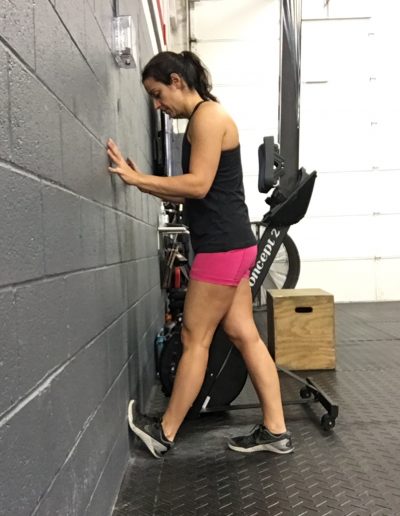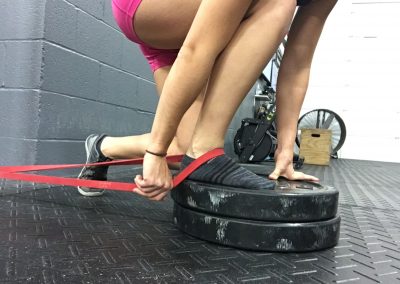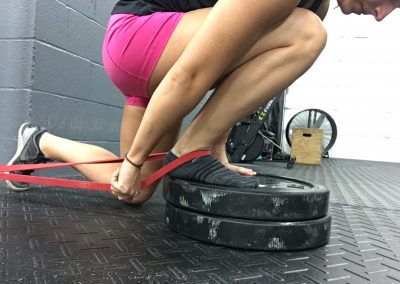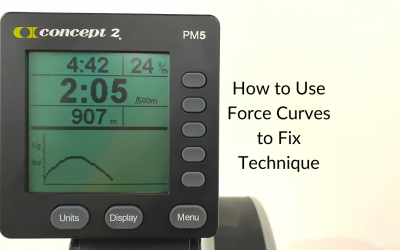Ankle Mobility in Rowing
Most people may think you don’t need much mobility in order to row. They may be correct, but you do need plenty of mobility to row WELL.
One area that I want to focus on is ankle mobility. I want to explain why this is important, and some exercises you can do before you row to help loosen up your ankles.
WHY YOU NEED ANKLE MOBILITY
In order to understand why you need ankle mobility for rowing, let’s first look at what happens when you have poor ankle mobility.
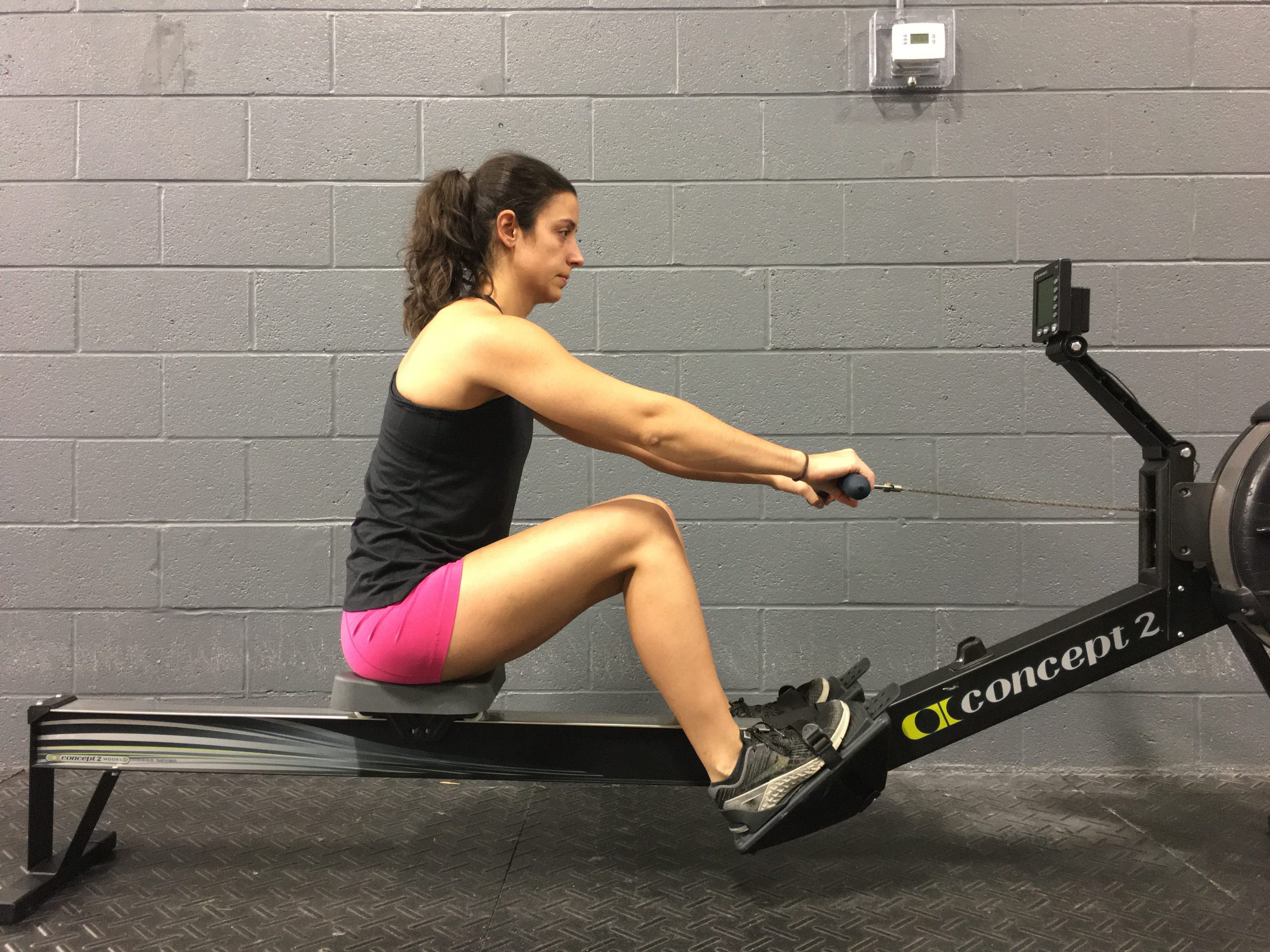
If you struggle with poor ankle mobility, you won’t be able to come all the way up the slide to a proper catch position (seen above). This will limit the length of your stroke, causing you to have less time to use your legs.
Your legs are the powerhouse in your stroke. You want to be able to use those babies as much as possible. A proper catch position has your shins vertical to the ground (see below).
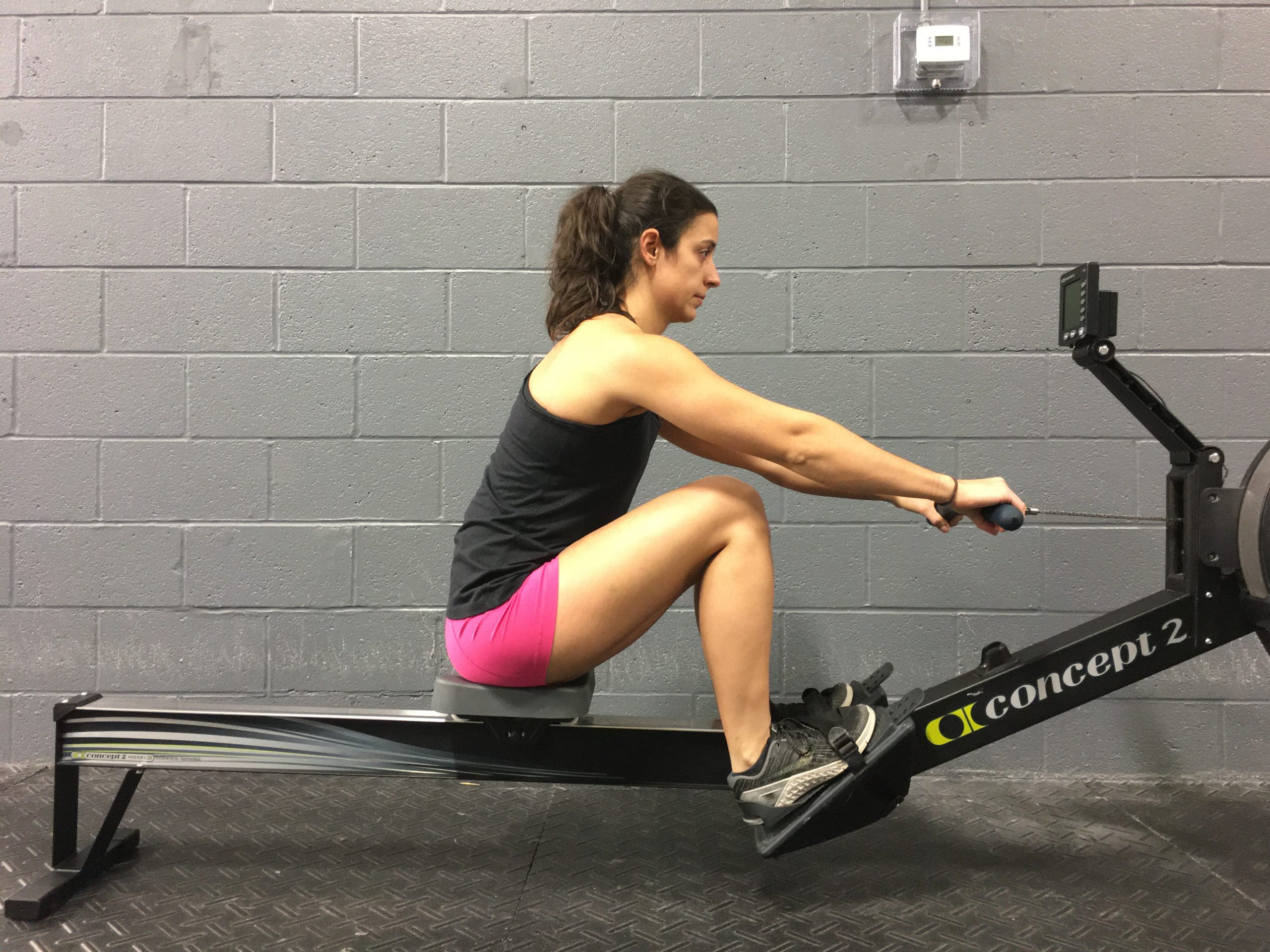
Most people need to lift their heels a little bit when they get up to the catch position. Ideally, you shouldn’t have to at all. This is another big advantage of having that ankle mobility. If your heels are still down on the footboards, it makes it so much easier to drive through your heels right away.
We want to be driving through our heels at the beginning of our catch. If you can’t get your heels down due to mobility issues, you will naturally drive more off of the soles of your feet.
With my experience at my current Crossfit gym, I’ve seen that people who don’t drive off their heels (so they drive off of the soles of their feet) also complain of knee pain after rowing. Now, I am no certified professional, but it’s my opinion that these two are related. Pushing off the soles of your feet puts a weird kind of pressure on your knees. If you drive off of your heels, then your hamstrings and quads are doing more of the work and less of that strain goes straight to your knees.
*if you are having pain of any kind while rowing, please see a certified professional to diagnose.
If you’re wondering what you can do to improve your ankle mobility, I have some exercises that you can do before your row to help improve it.
SQUAT AND SHIFTS
This is one of my favorite ankle mobility stretches. I don’t know what it is, but it just feels so good!
You’ll want some kind of weight to use. It can be a dumbbell, kettlebell, barbell, plate, or even your house pet (if they want to cooperate).
Get into the lowest squat position you can, and shift your weight to one of your feet. This will push your knee forward, and you will feel your heel lift off the ground. The extra weight you are holding will help to push your heel down to get a good stretch in the back of your ankle.
WALL STRETCH
Use a wall, rig, or anything grounded and stationary. Place the sole of your foot on the wall and lean forward, feeling the stretch in your ankle.
When you keep your leg straight, you will feel the stretch more in your upper calf. If you bend your knee forward, you will feel the stretch more in your lower calf. I like to do at least 20-30 seconds at each position (leg straight and then bent) on each leg.
FOAM ROLLING
Foam rolling is another good tool to use to loosen up that soft tissue in your legs.
Move back and forth across your lower calf, twisting your foot side to side to also roll out the muscles on the side. 20-30 seconds for each leg should be good.
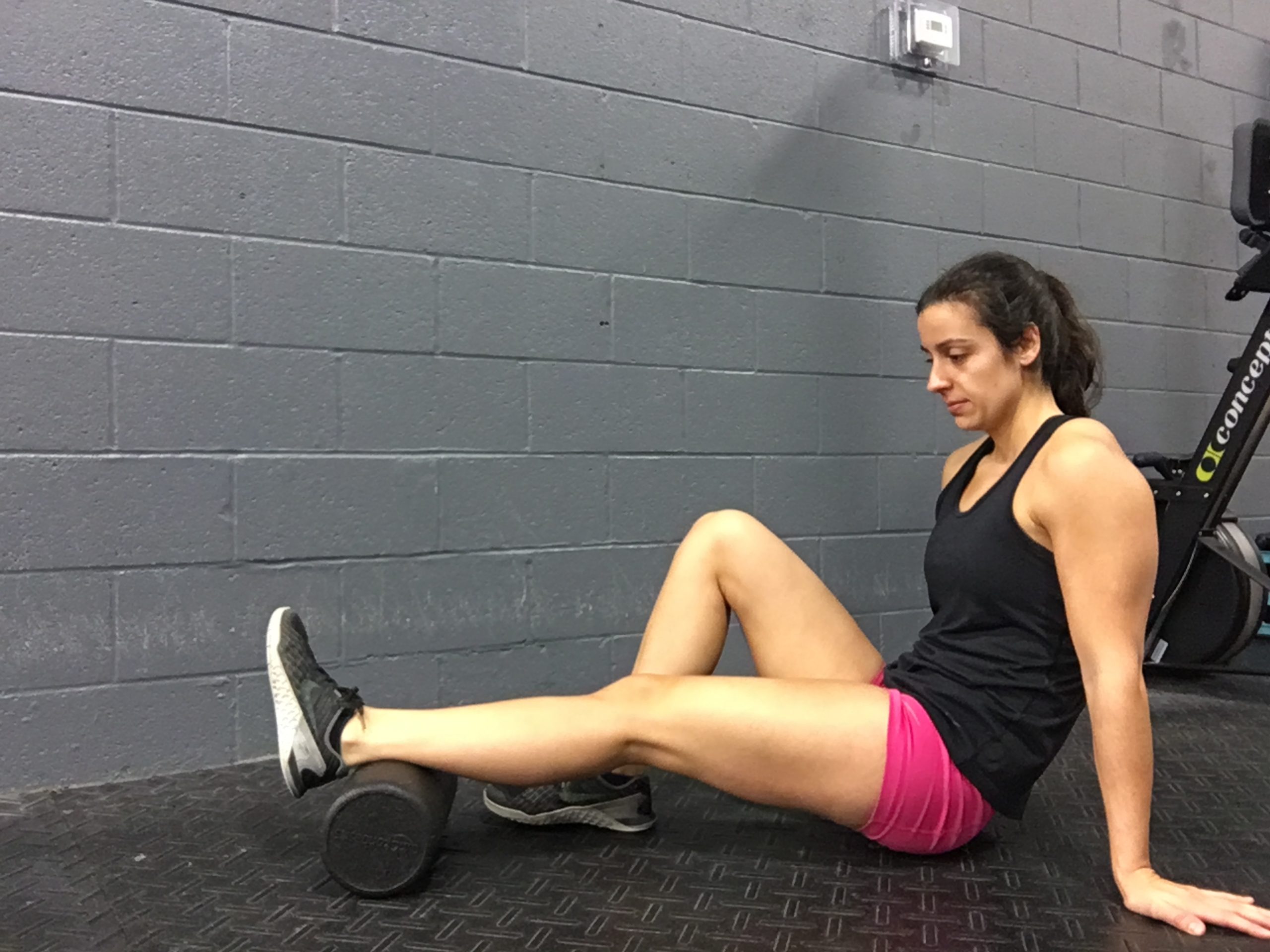
ANKLE BAND MOBILIZATION
I have started doing ankle band mobilizations more recently, and that’s thanks to Squat University. He has an excellent post about ankle mobility and includes this mobilization in his post here.
Ankle band mobilizations help to combat any joint mobility restrictions (as opposed to muscle restrictions). If you regularly feel a pinching sensation in the front part of your ankle while attempting to stretch your lower calf, it may be due to your joints getting stuck together and not allowing them to glide past each other.
With this mobilization, you want to set up your band by looping it onto a rig or some kind of stationary pole.
Then you want to set up as shown in the pictures below, and have the band BELOW that bone that sticks out of the outside of your ankle (it’s called the Malleolus).
While driving your knee forward, push the band back and down to perform the mobilization. You should feel this like a “stretch” in front of your ankle.
You don’t necessarily have to do all four of these exercises all the time. Find what works best for you, and how you can incorporate it into your warm-up. Even a couple of stretches or exercises each day can add up. Consistency is key.
How to Use Force Curves to Fix Technique
You may know what a force curve is, and you might not. There’s no rule anywhere saying you need to know what your force curve looks like, or use it. However, it can be a useful tool to see how you’re applying power. Confused? No worries. We will get into what a force...
5 Signs You Need a Rest Day
Most of us are go, go, go. All the time. While it’s great to be motivated, it’s also dangerous to go until you drop. Being able to catch yourself before you get to that point is so important. It will save you so much mental headache in the long run. In terms of your...
What a Coach Can Do for You
In a world that is bent on doing it all ourselves, it’s rare that we seek out help. So much headache can be spared when we set aside pride. Not only that, but it can be a huge time saver as well. Having a coach to guide you through your health and fitness journey...

